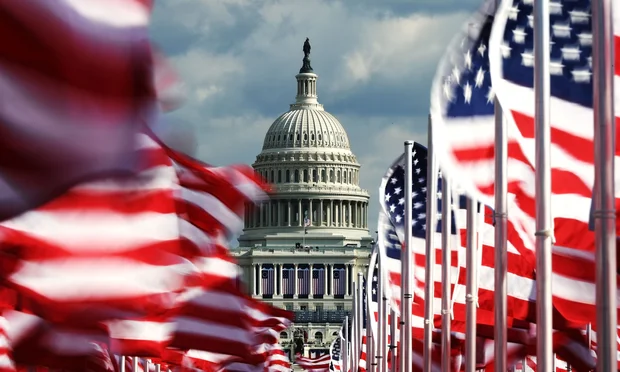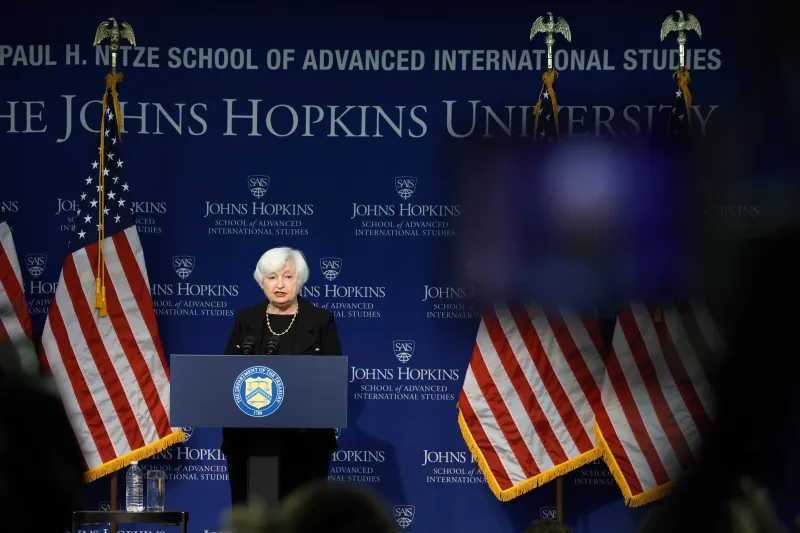The Rise of America: How the United States Became a Global Superpower
The Rise of America to Global Dominance
The rise of the United States from a fledgling colony to a global superpower is one of the most remarkable stories in world history. Over the course of several centuries, the country transformed from a collection of 13 British colonies into one of the most economically, politically, and militarily dominant nations on the planet. Understanding the factors that contributed to America’s rise involves analyzing key historical events, policies, technological advancements, and social changes that shaped its trajectory.
This blog will provide an in-depth analysis of the major factors that contributed to America’s rise, including its economic growth, military power, cultural influence, and diplomatic strategies. We will also explore how America’s global standing has evolved over time, from its early isolationist policies to its current role as a leader in international affairs.

I. The Early Foundations of American Power (1600s-1800s)
A. The Colonial Era and the Fight for Independence
- Colonial Foundations and Economic Growth
The early American colonies were established by European powers, primarily Great Britain, for trade, natural resources, and expansion. Colonists engaged in agriculture, commerce, and industry, creating the economic bedrock for future growth. By the mid-1700s, the colonies had established thriving economies based on farming, trade, and resource extraction, particularly in the areas of tobacco, cotton, and lumber.
- The American Revolution and Independence (1775-1783)
The colonies’ growing desire for independence culminated in the American Revolution, which was driven by economic grievances, political repression, and Enlightenment ideas about liberty and self-governance. The successful revolt against British rule set the stage for the creation of a new nation, founded on democratic ideals, free markets, and federalism.
- The Constitution and the Framework for Growth
The ratification of the U.S. Constitution in 1787 provided the legal framework for economic and political growth, establishing a stable government, the rule of law, and the protection of individual rights. The system of checks and balances, combined with democratic elections and property rights, encouraged both domestic investment and foreign trade, helping the nation build a solid foundation for future expansion.
B. Westward Expansion and Manifest Destiny
- Territorial Growth
In the 19th century, the United States pursued a policy of aggressive territorial expansion, driven by the idea of “Manifest Destiny,” which held that the nation was destined to expand across the North American continent. Major events, including the Louisiana Purchase in 1803, the annexation of Texas, and the acquisition of California after the Mexican-American War (1846-1848), significantly increased the country’s landmass and natural resources.
- Economic Opportunities and the Gold Rush
Westward expansion also brought new economic opportunities, including farming, mining, and industry. The California Gold Rush of 1848-1855, for instance, attracted hundreds of thousands of people and led to the rapid development of the Western United States. The expansion of the railroad network, particularly the completion of the Transcontinental Railroad in 1869, further facilitated trade, migration, and economic growth.
- Industrialization and Urbanization
The United States experienced rapid industrialization in the late 19th century, driven by technological innovation, natural resources, and a growing population. The rise of factories, mass production, and urban centers turned America into an economic powerhouse. Key industries, including steel, textiles, and oil, fueled the country’s transformation into a global industrial leader.

C. Civil War and Reconstruction
- The Civil War (1861-1865)
The American Civil War, fought over issues of slavery, states’ rights, and national unity, was a major turning point in U.S. history. The North’s victory over the Confederate South preserved the Union and led to the abolition of slavery, ensuring that the country would continue its trajectory of growth under a unified federal government.
- Reconstruction and Economic Modernization
In the aftermath of the Civil War, the United States underwent a period of Reconstruction, during which the South was reintegrated into the Union and significant economic and social reforms were implemented. This period also saw the expansion of infrastructure, including railroads and telegraph systems, which laid the groundwork for the country’s modernization.
II. The Industrial Revolution and Economic Growth (Late 1800s – Early 1900s)
A. Technological Innovation and Economic Expansion
- The Second Industrial Revolution
The late 19th and early 20th centuries saw the United States become a global leader in industrial innovation. The Second Industrial Revolution, marked by advances in electricity, steel production, and chemicals, further boosted American productivity and global competitiveness. Innovators like Thomas Edison and Alexander Graham Bell pioneered groundbreaking technologies that revolutionized communication and energy production.
- Rise of Major Corporations and Robber Barons
The rapid industrialization of America led to the rise of powerful corporations, monopolies, and influential business leaders known as “Robber Barons.” Figures like Andrew Carnegie in steel, John D. Rockefeller in oil, and J.P. Morgan in finance amassed immense wealth and controlled vast portions of the economy. While these men played a key role in driving economic growth, they also sparked debates about wealth inequality, labor rights, and corporate power.
- Urbanization and Immigration
The rise of American industry attracted millions of immigrants, particularly from Europe, who provided the labor necessary to fuel the country’s growth. Between 1880 and 1920, nearly 25 million immigrants arrived in the U.S., contributing to the rapid urbanization of cities like New York, Chicago, and Pittsburgh. This influx of labor allowed factories to operate at full capacity, further propelling economic growth.
B. The U.S. as a Global Economic Power
- Exports and Trade Growth
By the early 20th century, the United States had become one of the world’s leading exporters, particularly in agricultural products, manufactured goods, and natural resources. American companies expanded their reach into international markets, and the country’s growing economic clout was reinforced by its financial institutions.
- The Federal Reserve and Economic Regulation
In 1913, the U.S. government established the Federal Reserve to stabilize the economy and regulate monetary policy. This central banking system helped the country weather economic fluctuations and contributed to its growing financial power. Additionally, government regulation of monopolies and labor conditions, particularly through antitrust laws like the Sherman Act, helped to moderate the excesses of rapid industrialization.
III. The World Wars and America’s Emergence as a Superpower (1914-1945)
A. World War I and Economic Boom
- American Neutrality and Economic Gains
At the outbreak of World War I in 1914, the United States initially maintained a position of neutrality. However, American businesses benefited from supplying the Allied Powers with goods, weapons, and resources. This trade helped stimulate the U.S. economy, and by the time America entered the war in 1917, its economic position had strengthened considerably.
- Post-War Economic Growth
After the war, the United States emerged as the world’s largest creditor nation. The financial center of the world shifted from London to New York, solidifying America’s status as a global economic leader. The Roaring Twenties, a period of economic prosperity, saw increased consumer spending, technological innovation, and cultural flourishing.
B. The Great Depression and New Deal Reforms
- The Great Depression (1929-1939)
The stock market crash of 1929 triggered the Great Depression, a period of economic hardship that affected millions of Americans. Unemployment skyrocketed, banks failed, and businesses closed. The economic downturn had global implications, as the U.S. was a key player in the world economy.
- Franklin D. Roosevelt’s New Deal
In response to the Great Depression, President Franklin D. Roosevelt implemented the New Deal, a series of government programs and reforms aimed at stimulating economic recovery. The New Deal included public works projects, social security, and financial reforms, which helped to stabilize the economy and laid the groundwork for future growth.
C. World War II and the U.S. as a Superpower
- Economic Mobilization for War
The United States’ entry into World War II in 1941 marked a turning point in the nation’s global influence. The country quickly mobilized its industrial capacity to produce weapons, vehicles, and supplies for the war effort. American factories churned out tanks, planes, and ships, and the war effort created millions of jobs, pulling the country out of the Great Depression.
- Post-War Economic Dominance
By the end of World War II, the United States had emerged as one of the world’s two superpowers, alongside the Soviet Union. The U.S. economy was the strongest in the world, its military was unmatched, and its cultural influence was growing. The Marshall Plan, through which the U.S. provided financial aid to rebuild war-torn Europe, further solidified America’s global leadership role.
IV. The Cold War Era and Economic Expansion (1945-1991)
A. The Post-War Boom and the American Dream
- Suburbanization and Consumerism
The post-World War II era saw unprecedented economic growth in the United States, with rising wages, low unemployment, and increased consumer spending. The GI Bill provided education and housing benefits to returning soldiers, fueling the growth of the middle class. Suburbanization, driven by the availability of affordable housing and the expansion of the highway system, became a defining feature of American life.
- Technological Innovation and Industrial Growth
The Cold War era was marked by significant technological advancements, many of which were driven by the space race and military competition with the Soviet Union. Innovations in
computing, aerospace, and telecommunications not only enhanced U.S. military capabilities but also spurred economic growth and created new industries.
B. The Cold War and Global Influence
- Military and Diplomatic Power
During the Cold War, the United States and the Soviet Union competed for global influence through military alliances, proxy wars, and diplomatic efforts. The U.S. established itself as the leader of the Western bloc, forming alliances such as NATO and supporting anti-communist regimes around the world. This period saw the U.S. engage in conflicts in Korea, Vietnam, and other regions as part of its broader strategy to contain Soviet influence.
- Economic Influence Through Trade and Aid
In addition to military power, the U.S. wielded significant economic influence through trade and foreign aid. The Bretton Woods system, established in 1944, made the U.S. dollar the world’s reserve currency, further solidifying America’s role in the global economy. American companies expanded their presence overseas, and U.S. foreign aid programs, such as the Alliance for Progress in Latin America, were used as tools of diplomacy.
V. The U.S. in the 21st Century: Challenges and Opportunities
A. The Post-Cold War Era and Globalization
- The Fall of the Soviet Union and Unipolarity
The collapse of the Soviet Union in 1991 left the United States as the world’s sole superpower. In the 1990s, the U.S. economy benefited from the end of Cold War military spending and the rise of globalization. American companies, particularly in the technology sector, expanded their influence worldwide, and the U.S. economy experienced strong growth.
- Technological Leadership and the Digital Revolution
The rise of the internet and the digital revolution in the late 20th and early 21st centuries further cemented America’s global dominance. Silicon Valley became the hub of technological innovation, with companies like Microsoft, Apple, Google, and Amazon shaping the future of global commerce, communication, and culture.
B. Challenges in the 21st Century
- The War on Terror and Military Overextension
The terrorist attacks of September 11, 2001, marked a new chapter in U.S. foreign policy, as the country embarked on the War on Terror. The wars in Afghanistan and Iraq, while aimed at combating terrorism and promoting democracy, resulted in long-term military engagements and significant financial costs. Critics argue that these conflicts strained the U.S. military and diverted resources from domestic needs.
- Economic Inequality and Domestic Challenges
In recent years, the United States has faced growing economic inequality, political polarization, and challenges related to healthcare, education, and infrastructure. The 2008 financial crisis exposed vulnerabilities in the U.S. financial system, leading to a prolonged economic downturn and debates about the role of government in regulating the economy.
- China’s Rise and Global Competition
In the 21st century, the U.S. has faced increasing competition from China, which has emerged as a major global economic power. China’s rapid industrialization, technological advancements, and growing influence in international organizations have challenged America’s leadership in global affairs. The U.S.-China rivalry, particularly in trade, technology, and military power, is likely to shape the future of global geopolitics.
VI. The Future of American Power
The United States has experienced a remarkable rise from a colonial outpost to a global superpower. Its economic, military, and cultural influence has shaped the modern world in profound ways. However, as the U.S. faces new challenges in the 21st century, including global competition, domestic inequality, and geopolitical instability, its future role as the world’s leading power is uncertain.
Despite these challenges, the United States remains a dominant force in global affairs, with unmatched military capabilities, a robust economy, and a culture that continues to shape the world. As America navigates the complexities of the 21st century, its ability to adapt to new realities and maintain its leadership will be critical to its continued success on the world stage.
References:
- Maddison, Angus. Contours of the World Economy, 1-2030 AD: Essays in Macro-Economic History. Oxford University Press, 2007.
- Kennedy, Paul. The Rise and Fall of the Great Powers. Vintage, 1987.
- Nye, Joseph S. The Future of Power. PublicAffairs, 2011.
- Zakaria, Fareed. The Post-American World. W.W. Norton & Company, 2008.
- Ferguson, Niall. Empire: The Rise and Demise of the British World Order and the Lessons for Global Power. Basic Books, 2004.






